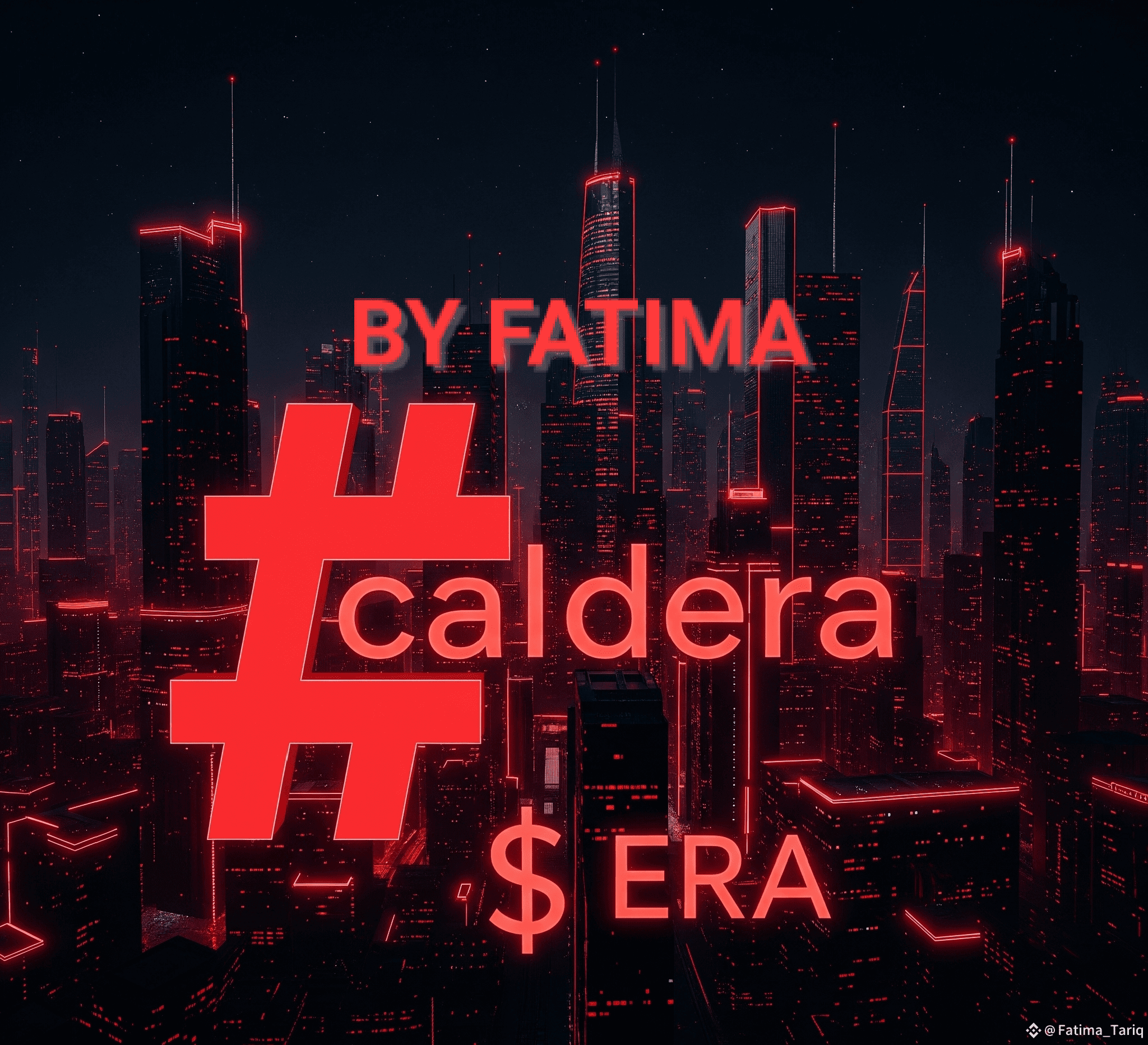
Imagine a sprawling, bustling metropolis. Instead of being a single, monolithic city where everyone is crammed into the same space, this city is made up of countless specialized neighborhoods. Each neighborhood has its own unique architecture and rules, optimized for its residents' specific needs—a district for high-frequency trading, another for fast-paced gaming, a third for creative NFT artists. But here's the magic: all these districts are seamlessly connected, allowing people and resources to move between them without a second thought.
This isn't a fantasy city; it's the future Caldera is building for the blockchain world.
For years, the crypto industry has been struggling with what's known as the blockchain trilemma—the idea that a blockchain can only achieve two of three key pillars: scalability, security, and decentralization. The original chains, like Ethereum, prioritized security and decentralization but faced serious scaling issues, leading to slow and expensive transactions. Other projects chose to sacrifice decentralization for speed, but that creates its own set of problems.
This is where Caldera's innovative approach comes in, offering a way to solve this trilemma by not just building one chain, but an entire ecosystem of them.
At the heart of Caldera's vision is its Rollup-as-a-Service (RaaS) platform. Think of it as a set of blueprints and tools for building these new digital districts. Instead of developers having to build a new blockchain from scratch, they can use Caldera's platform to quickly and easily create their own customized Layer 2 (L2) blockchain, or "rollup." This is a huge deal because it saves a ton of time and resources.
But this isn't a one-size-fits-all solution. Caldera gives developers unprecedented control over every detail of their new rollup. You can tailor it to your specific needs, like choosing a custom token for gas fees, setting up your own MEV (Maximal Extractable Value) policies to prevent things like front-running in DeFi, and fine-tuning throughput parameters to ensure your application can handle the demand.
This level of customization means that developers can create specialized environments perfect for their use case. A gaming studio, for example, can launch a rollup with ultra-low latency and predictable fees, giving players a smooth, frustration-free experience. A high-frequency DeFi protocol can build a chain with precise control over MEV, which is crucial for fair and efficient trading. Caldera is empowering creators to build the exact infrastructure they need without compromise.
This is the promise of application-specific rollups, and it's a game-changer. It shifts the focus from building on a crowded, generic chain to creating a dedicated, high-performance environment for a single application or a small group of related ones.
But what about fragmentation? If everyone is building their own separate chain, won't that create a bunch of isolated islands? This is the very problem Caldera is designed to solve with its groundbreaking Metalayer.
The Metalayer acts as a unifying fabric that connects all these different rollups, regardless of whether they're based on Optimistic or Zero-Knowledge technology. It’s like the road system that connects all the different districts in our metaphorical city. It allows for seamless, trust-minimized communication and resource sharing between chains.
The Metalayer uses an intent-based bridging system, which simplifies cross-chain interactions dramatically. Instead of a user having to navigate a complex, multi-step process to move assets from one chain to another, they can simply state what they want to do—"I want to send 1 ETH to this other chain"—and the system automatically handles all the tricky parts in the background. It also has a powerful gas abstraction feature, allowing users to pay for transactions with their source chain's native token, which is a huge step forward for usability.
This seamless interoperability is Caldera's unique competitive edge. It blends deep customization with universal connectivity, setting it apart from other L2 solutions. It’s not just about making a single chain better; it's about creating a cohesive network of specialized, high-performance chains.
The entire Caldera ecosystem is powered by the $ERA token. This token isn't just a speculative asset; it's the foundation stone of the whole architecture. It serves as the utility token for transaction fees within the Metalayer and acts as a pivotal governance token, giving the community a voice in shaping the future of the platform. By staking $ERA, users can also help secure the network and its various components, aligning the incentives of all participants.
With over 70 rollups already launched and partnerships with prominent projects, Caldera is moving from vision to reality. They are building the foundational infrastructure for a multi-rollup world, a future where the blockchain ecosystem isn't a single, rigid structure, but a dynamic, interconnected network of specialized chains.
This vision redefines what decentralized computing can be. It's about moving away from the idea of a single chain trying to do everything and instead embracing a modular, specialized, and interconnected future. Caldera is essentially providing the blueprints for the next era of Web3—a digital urban landscape where innovation can flourish, and where every district is built with intention, yet connected in a way that allows for fluid, spontaneous growth.


